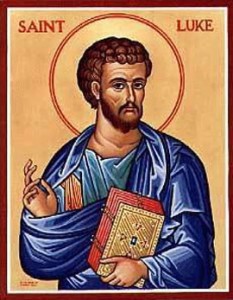 In my last post, I drew together some lines of thought. (1) The Gospel of Luke’s preface says the writer is putting things ‘orderly’ or ‘in order.’ (2) The central section of the Gospel of Luke exhibits a structure of chiasm (according to some scholars) and disagrees with the order of Mark/Matthew. (3) Some writers in the ancient world used such literary structure to make their text memorable to those hearing it read.
In my last post, I drew together some lines of thought. (1) The Gospel of Luke’s preface says the writer is putting things ‘orderly’ or ‘in order.’ (2) The central section of the Gospel of Luke exhibits a structure of chiasm (according to some scholars) and disagrees with the order of Mark/Matthew. (3) Some writers in the ancient world used such literary structure to make their text memorable to those hearing it read.
From this, I concluded that the author of Luke-Acts intentionally ordered his narrative to make it memorable, that this is part of the interpretation of the preface, that this explains his treatment of the other synoptics, and lastly that Luke-Acts did all this so that his work could stand on its own, as it were, as an important text to be read widely, without having a claim to apostolic authorship.
- This short essay moved from premises, stated and unstated, to a conclusion.
- The conclusion is a plausible but not necessary consequence of the premises.
- The stated premises are not beyond reproach (e.g., chiasmus or no?).
- The unstated premises are a bit shaky too (e.g., the text of Luke-Acts, any synoptic problem solution).
To say that a lot of writing on the New Testament follows this kind of pattern is a bit of an understatement.
There is more to the problem of Luke and Acts than first meets the eye… Continue reading »
